Discover The 365 Days of Astronomy
The 365 Days of Astronomy

The 365 Days of Astronomy
Author: 365DaysOfAstronomy.org
Subscribed: 4,472Played: 217,862Subscribe
Share
© 2009
Description
The 365 Days of Astronomy podcast launched in 2009 as part of the International Year of Astronomy. This community podcast continues to bring you day after day of content across the years. Everyday, a new voice, helping you see the universe we share in a new way. This show is managed by Avivah Yamani, edited by Richard Drumm. This podcast is funded through Patreon.com/CosmoQuestX and produced out of the Planetary Science Institute.
2198 Episodes
Reverse
Dr. Al Grauer hosts. Dr. Albert D. Grauer ( @Nmcanopus ) is an observational asteroid hunting astronomer. Dr. Grauer retired from the University of Arkansas at Little Rock in 2006. travelersinthenight.org From September 2025. Today's 2 topics: - The lunar roving, battery powered, 4 wheel drive "Moon Buggy" allowed astronauts on Apollo 15, 16, and 17 to travel 8 mph on the lunar surface with a maximum range of approximately 4.7 mi. Some of the rocks that these space travelers brought back, from the tiny area they were able to visit on the Moon, contained volcanic glass beads with trace amounts of trapped water inside of them. - When the Japanese spacecraft Hayabusa visited the near Earth asteroid Itokawa in 2005 it found this 2000 foot by 800 foot elliptical world to have a variety of surface features. Instead of being a solid object like some asteroids, Itokawa is a rubble pile of boulders and pebbles held together by its tiny gravity. The total volume of pebbles seems to be comparable to the volume of large rocks and boulders which make up Itokawa , however, the depths of the pebbles or their concentration in the center remains unknown. Given this uncertainty, this asteroid appears to be made up of a million times more small particles than larger ones. We've added a new way to donate to 365 Days of Astronomy to support editing, hosting, and production costs. Just visit: https://www.patreon.com/365DaysOfAstronomy and donate as much as you can! Share the podcast with your friends and send the Patreon link to them too! Every bit helps! Thank you! ------------------------------------ Do go visit http://www.redbubble.com/people/CosmoQuestX/shop for cool Astronomy Cast and CosmoQuest t-shirts, coffee mugs and other awesomeness! http://cosmoquest.org/Donate This show is made possible through your donations. Thank you! (Haven't donated? It's not too late! Just click!) ------------------------------------ The 365 Days of Astronomy Podcast is produced by the Planetary Science Institute. http://www.psi.edu Visit us on the web at 365DaysOfAstronomy.org or email us at info@365DaysOfAstronomy.org.
Hosted by our Director, Avivah Yamani. Today we have sky guide for the rest of December 2025, specifically curated for observers in the equatorial region with Indonesia as the based of location. While the recent dazzling Full Moon and Supermoon gave us a brilliant start, the celestial show continues with powerful planetary meetings and the most spectacular meteor shower of the year! We've added a new way to donate to 365 Days of Astronomy to support editing, hosting, and production costs. Just visit: https://www.patreon.com/365DaysOfAstronomy and donate as much as you can! Share the podcast with your friends and send the Patreon link to them too! Every bit helps! Thank you! ------------------------------------ Do go visit http://www.redbubble.com/people/CosmoQuestX/shop for cool Astronomy Cast and CosmoQuest t-shirts, coffee mugs and other awesomeness! http://cosmoquest.org/Donate This show is made possible through your donations. Thank you! (Haven't donated? It's not too late! Just click!) ------------------------------------ The 365 Days of Astronomy Podcast is produced by the Planetary Science Institute. http://www.psi.edu Visit us on the web at 365DaysOfAstronomy.org or email us at info@365DaysOfAstronomy.org.
From March 3, 2020. Hosted by Suzie Murph. This week's news is weird. Cotton candy exoplanets called "SuperPuffs" may have rings, the Milky Way Galaxy may have been warped by a major collision, and conference COVID cancellations and uncertainty are overwhelming the news this week. We've added a new way to donate to 365 Days of Astronomy to support editing, hosting, and production costs. Just visit: https://www.patreon.com/365DaysOfAstronomy and donate as much as you can! Share the podcast with your friends and send the Patreon link to them too! Every bit helps! Thank you! ------------------------------------ Do go visit http://www.redbubble.com/people/CosmoQuestX/shop for cool Astronomy Cast and CosmoQuest t-shirts, coffee mugs and other awesomeness! http://cosmoquest.org/Donate This show is made possible through your donations. Thank you! (Haven't donated? It's not too late! Just click!) ------------------------------------ The 365 Days of Astronomy Podcast is produced by the Planetary Science Institute. http://www.psi.edu Visit us on the web at 365DaysOfAstronomy.org or email us at info@365DaysOfAstronomy.org.
Hosted by Chris Beckett & Shane Ludtke, two amateur astronomers in Saskatchewan. actualastronomy@gmail.com - Dec 3-4 – Moon 0.8° N of Pleiades (Occults stars in Virginia) Carbon Star U Lyr best tonight - Dec 4 – Full Moon in Taurus - Dec 7 – Jupiter 4° South of Moon Mercury Greatest Elongation 21° from Sun in morning Sky Endymion sunset rays visible on Moon - Dec 7-8 Moon and M44 - Dec 8 – 16 Psyche at Opposition 9.4 magnitude Asteroid 16 Psyche is a large, metal-rich asteroid, thought to be the exposed core of a protoplanet, located between Mars and Jupiter. It is composed of a high concentration of nickel and iron and is estimated to be worth an astronomical amount of metal. Scientists are studying it to learn more about the formation of Earth's core and other rocky planets, and a NASA mission is currently underway to explore it. - Dec 10 – Moon Occults Regulus 2am - Dec 13 – Geminid Meteor Shower – up to 150 ZHR on morning of the 14th. - Dec 21 – Ursid meteor Shower – 10 zhr - Dec 22 Moon Occults Pluto at 4pm EST - Dec 23 Carbon Star Z Psc best tonight - Dec 24 Comet 24P Schaumasse visible tonight Marie called it again…we have yet another bright comet…8.5 magnitude by mid month, moon leaves sky on 11/12th - Dec 25 Saturn Ring Tilt -0.76 - Dec 26 – Lunar X near crater Werner visible - Dec 27 — Saturn, Neptune and Moon congregate in evening sky. Lunar Straight Wall visible - Dec 29 – Jeweled Handle Visible On Moon - Dec 31 – Moon 0.9° N of Pleiades Carbon Star T Lyn best tonight We've added a new way to donate to 365 Days of Astronomy to support editing, hosting, and production costs. Just visit: https://www.patreon.com/365DaysOfAstronomy and donate as much as you can! Share the podcast with your friends and send the Patreon link to them too! Every bit helps! Thank you! ------------------------------------ Do go visit http://www.redbubble.com/people/CosmoQuestX/shop for cool Astronomy Cast and CosmoQuest t-shirts, coffee mugs and other awesomeness! http://cosmoquest.org/Donate This show is made possible through your donations. Thank you! (Haven't donated? It's not too late! Just click!) ------------------------------------ The 365 Days of Astronomy Podcast is produced by the Planetary Science Institute. http://www.psi.edu Visit us on the web at 365DaysOfAstronomy.org or email us at info@365DaysOfAstronomy.org.
Paul Hill and Dr. Jenifer "Dr. Dust" Millard host. Damien Phillips, John Wildridge and Dustin Ruoff produce. This episode it is a new bananza with discussion of the Thirty Metre Telescope, shenanigans on Mars, asymmetrical supernovae and more trouble in the world of cosmology. There is a Xmas Telescope buying guide as well as our monthly skyguide! We've added a new way to donate to 365 Days of Astronomy to support editing, hosting, and production costs. Just visit: https://www.patreon.com/365DaysOfAstronomy and donate as much as you can! Share the podcast with your friends and send the Patreon link to them too! Every bit helps! Thank you! ------------------------------------ Do go visit http://www.redbubble.com/people/CosmoQuestX/shop for cool Astronomy Cast and CosmoQuest t-shirts, coffee mugs and other awesomeness! http://cosmoquest.org/Donate This show is made possible through your donations. Thank you! (Haven't donated? It's not too late! Just click!) ------------------------------------ The 365 Days of Astronomy Podcast is produced by the Planetary Science Institute. http://www.psi.edu Visit us on the web at 365DaysOfAstronomy.org or email us at info@365DaysOfAstronomy.org.
What happens to a white dwarf when it cools off? How long does it take? Do they just stay black forever, or will something more interesting happen to them someday? I discuss these questions and more in today's Ask a Spaceman! Support the show: http://www.patreon.com/pmsutter All episodes: http://www.AskASpaceman.com Watch on YouTube: http://www.youtube.com/PaulMSutter Read a book: https://www.pmsutter.com/books Keep those questions about space, science, astronomy, astrophysics, physics, and cosmology coming to #AskASpaceman for COMPLETE KNOWLEDGE OF TIME AND SPACE! Big thanks to my top Patreon supporters this month: Justin G, Chris L, Alberto M, Duncan M, Corey D, Michael P, Naila, Sam R, Joshua, Scott M, Rob H, Scott M, Louis M, John W, Alexis, Gilbert M, Rob W, Jessica M, Jules R, Jim L, David S, Scott R, Heather, Mike S, Pete H, Steve S, Lisa R, Kevin B, Aileen G, Steven W, Deb A, Michael J, Phillip L, Steven B, Mark R, Alan B, Craig B, Richard K, Stephen J, Joe R, David P, Justin, Tracy F, Ella F, Thomas K, James C, Syamkumar M, Homer V, Mark D, Bruce A, Tim Z, Linda C, The Tired Jedi, Lode D, Bob C, Red B, Stephen A, James R, Robert O, Allen E, Michael S, Reinaldo A, Sheryl, David W, Chris, Michael S, Erlend A, James D, Larry D, Karl W, Den K, Edward K, Craig M, Scott K, Vivek D, Barbara C, Brad, Azra K, Steve R, Koen G, and Narrative Dude! Hosted by Dr. Paul M. Sutter. We've added a new way to donate to 365 Days of Astronomy to support editing, hosting, and production costs. Just visit: https://www.patreon.com/365DaysOfAstronomy and donate as much as you can! Share the podcast with your friends and send the Patreon link to them too! Every bit helps! Thank you! ------------------------------------ Do go visit http://www.redbubble.com/people/CosmoQuestX/shop for cool Astronomy Cast and CosmoQuest t-shirts, coffee mugs and other awesomeness! http://cosmoquest.org/Donate This show is made possible through your donations. Thank you! (Haven't donated? It's not too late! Just click!) ------------------------------------ The 365 Days of Astronomy Podcast is produced by the Planetary Science Institute. http://www.psi.edu Visit us on the web at 365DaysOfAstronomy.org or email us at info@365DaysOfAstronomy.org.
https://www.youtube.com/watch?v=MI7BBHAhdSo Hosted by: Fraser Cain and Dr. Pamela L. Gay. Streamed live on Nov 9, 2025. We are powerless fans of space exploration. But what if some fool gave us the authority and funding to make our space dreams a reality? Someone asked us what we'd do with a billion dollars. What missions? Which telescopes? But what if we had more? 100 Billion! A trillion! All the monies! You keep asking, and this week we answer you! Come hear what Fraser and Pamela would do if they were given complete control over $1billion that had to be used for astronomy. This show is supported through people like you on Patreon.com/AstronomyCast In this episode, we'd like to thank: Andrew Poelstra, BogieNet, Brian Cagle, Burry Gowen, David, David Rossetter, Ed, Gerhard Schwarzer, Jason Kwong, Jeanette Wink, Michael Purcell, Sergey Manouilov, Siggi Kemmler, Sérgio Sancevero We've added a new way to donate to 365 Days of Astronomy to support editing, hosting, and production costs. Just visit: https://www.patreon.com/365DaysOfAstronomy and donate as much as you can! Share the podcast with your friends and send the Patreon link to them too! Every bit helps! Thank you! ------------------------------------ Do go visit http://www.redbubble.com/people/CosmoQuestX/shop for cool Astronomy Cast and CosmoQuest t-shirts, coffee mugs and other awesomeness! http://cosmoquest.org/Donate This show is made possible through your donations. Thank you! (Haven't donated? It's not too late! Just click!) ------------------------------------ The 365 Days of Astronomy Podcast is produced by the Planetary Science Institute. http://www.psi.edu Visit us on the web at 365DaysOfAstronomy.org or email us at info@365DaysOfAstronomy.org.
Dr. Al Grauer hosts. Dr. Albert D. Grauer ( @Nmcanopus ) is an observational asteroid hunting astronomer. Dr. Grauer retired from the University of Arkansas at Little Rock in 2006. travelersinthenight.org From September 2025. Today's 2 topics: - The Sun is our very own well behaved star. It rises and sets in our sky every day and powers and makes possible all life forms on planet Earth. A new appreciation for our Sun is growing as we learn more about other suns and their families of planets. The Trappist-1 system of 7 planets orbits a dim M type red dwarf star about 40 light years away in the constellation of Aquarius. Recently, Dr. Manasvi Lingam and Dr. Abraham Loeb of Harvard University have calculated the likelihood that planets orbiting red dwarf stars are able to possess an atmosphere conducive to life. - Martian Trojan asteroids have stable orbits around the Sun, leading and trailing the red planet by 60 degrees, where the Sun's and Mars's gravity are balanced. For some time astronomers have considered it unlikely that these asteroids wandered in from the asteroid belt. Recently, Dr. David Polishook of the Weizmann Institute of Science in Israel led a group of researchers who published a paper in the journal Nature Astronomy which sets forth evidence that a group of 7 Martian Trojan Asteroids were blasted from the Martian surface when a large asteroid impacted the red planet early in the history of the solar system. We've added a new way to donate to 365 Days of Astronomy to support editing, hosting, and production costs. Just visit: https://www.patreon.com/365DaysOfAstronomy and donate as much as you can! Share the podcast with your friends and send the Patreon link to them too! Every bit helps! Thank you! ------------------------------------ Do go visit http://www.redbubble.com/people/CosmoQuestX/shop for cool Astronomy Cast and CosmoQuest t-shirts, coffee mugs and other awesomeness! http://cosmoquest.org/Donate This show is made possible through your donations. Thank you! (Haven't donated? It's not too late! Just click!) ------------------------------------ The 365 Days of Astronomy Podcast is produced by the Planetary Science Institute. http://www.psi.edu Visit us on the web at 365DaysOfAstronomy.org or email us at info@365DaysOfAstronomy.org.
Hosted by our Director, Avivah Yamani. In Japanese folklore Tokuzou was a great mariner from Osaka who relied on Polaris (as we europeans call it), the North Star for navigation at sea. Then one night his wife saw that it had shifted out of place and she was afraid that her husband wouldn't be able to find his way back home! We've added a new way to donate to 365 Days of Astronomy to support editing, hosting, and production costs. Just visit: https://www.patreon.com/365DaysOfAstronomy and donate as much as you can! Share the podcast with your friends and send the Patreon link to them too! Every bit helps! Thank you! ------------------------------------ Do go visit http://www.redbubble.com/people/CosmoQuestX/shop for cool Astronomy Cast and CosmoQuest t-shirts, coffee mugs and other awesomeness! http://cosmoquest.org/Donate This show is made possible through your donations. Thank you! (Haven't donated? It's not too late! Just click!) ------------------------------------ The 365 Days of Astronomy Podcast is produced by the Planetary Science Institute. http://www.psi.edu Visit us on the web at 365DaysOfAstronomy.org or email us at info@365DaysOfAstronomy.org.
From April 21, 2021. Researchers looked for a slowdown in black hole rotational speeds due to the collection of ultralight bosons, but they found nothing, eliminating the hypothetical particle from the list of possible dark matter particles. Plus, neutrino hunting, neutron stars, and a space hurricane. We've added a new way to donate to 365 Days of Astronomy to support editing, hosting, and production costs. Just visit: https://www.patreon.com/365DaysOfAstronomy and donate as much as you can! Share the podcast with your friends and send the Patreon link to them too! Every bit helps! Thank you! ------------------------------------ Do go visit http://www.redbubble.com/people/CosmoQuestX/shop for cool Astronomy Cast and CosmoQuest t-shirts, coffee mugs and other awesomeness! http://cosmoquest.org/Donate This show is made possible through your donations. Thank you! (Haven't donated? It's not too late! Just click!) ------------------------------------ The 365 Days of Astronomy Podcast is produced by the Planetary Science Institute. http://www.psi.edu Visit us on the web at 365DaysOfAstronomy.org or email us at info@365DaysOfAstronomy.org.
Episode 207. Today's guest: Professor Thomas Hockey, with the University of Northern Iowa, is the recipient of HAD's 2026 LeRoy E. Doggett Prize, which is awarded biennially to an individual who has significantly influenced the field of the history of astronomy by a career-long effort. In our interview, we'll hear about his background and explore some of his many achievements. This is the first of multiple episodes presenting our interview with him. H'ad astra historia is the official podcast for the Historical Astronomy Division of the American Astronomical Society. We're here to share stories from and about the people who study the stars, planets, and the cosmos. We'll be hearing from individuals who not only study the history of astronomy, but also those who lived it, who were "in the room" during pivotal events within the last 50 years or so. podcast music: "Frost Waltz" Kevin MacLeod (incompetech.com), licensed under creative commons: by attribution 4.0 license (http://creativecommons.org/licenses/by/4.0/) Podcaster: Loretta Cannon (an AAS affiliate via Rose City Astronomers) is a science-and-word-nerd who really likes outer space and the people who study it. She quite enjoys working as HAD's podcaster, sharing astronomy stories to you. We've added a new way to donate to 365 Days of Astronomy to support editing, hosting, and production costs. Just visit: https://www.patreon.com/365DaysOfAstronomy and donate as much as you can! Share the podcast with your friends and send the Patreon link to them too! Every bit helps! Thank you! ------------------------------------ Do go visit http://www.redbubble.com/people/CosmoQuestX/shop for cool Astronomy Cast and CosmoQuest t-shirts, coffee mugs and other awesomeness! http://cosmoquest.org/Donate This show is made possible through your donations. Thank you! (Haven't donated? It's not too late! Just click!) ------------------------------------ The 365 Days of Astronomy Podcast is produced by the Planetary Science Institute. http://www.psi.edu Visit us on the web at 365DaysOfAstronomy.org or email us at info@365DaysOfAstronomy.org.
Hosted by Steve Nerlich. From October 14, 2024. Episode 5 — Too much is never enough. Cheap Astronomy's vision for space exploration: build whopping-big telescopes and send the robots. We've added a new way to donate to 365 Days of Astronomy to support editing, hosting, and production costs. Just visit: https://www.patreon.com/365DaysOfAstronomy and donate as much as you can! Share the podcast with your friends and send the Patreon link to them too! Every bit helps! Thank you! ------------------------------------ Do go visit http://www.redbubble.com/people/CosmoQuestX/shop for cool Astronomy Cast and CosmoQuest t-shirts, coffee mugs and other awesomeness! http://cosmoquest.org/Donate This show is made possible through your donations. Thank you! (Haven't donated? It's not too late! Just click!) ------------------------------------ The 365 Days of Astronomy Podcast is produced by the Planetary Science Institute. http://www.psi.edu Visit us on the web at 365DaysOfAstronomy.org or email us at info@365DaysOfAstronomy.org.
https://www.youtube.com/watch?v=_BOqF2XknOc From Jan 12, 2018. Hosted by Tony Darnell. Like this content? Please consider becoming a patron: https://www.patreon.com/profile/creators?u=2493405 On January 11, 2017 the Spitzer and Hubble Space Telescope missions released an amazing flythrough of the Orion Nebula, or M42. Never before have we had such a detailed look at this naked eye object in two wavelengths. Using actual scientific imagery and other data, combined with Hollywood techniques, a team at the Space Telescope Science Institute in Baltimore, and the Caltech/Infrared Processing and Analysis Center (IPAC) in Pasadena, California, has created the best and most detailed multi-wavelength visualization yet of this photogenic nebula. [Editor's note: You really do want to click on the YouTube link above.] We've added a new way to donate to 365 Days of Astronomy to support editing, hosting, and production costs. Just visit: https://www.patreon.com/365DaysOfAstronomy and donate as much as you can! Share the podcast with your friends and send the Patreon link to them too! Every bit helps! Thank you! ------------------------------------ Do go visit http://www.redbubble.com/people/CosmoQuestX/shop for cool Astronomy Cast and CosmoQuest t-shirts, coffee mugs and other awesomeness! http://cosmoquest.org/Donate This show is made possible through your donations. Thank you! (Haven't donated? It's not too late! Just click!) ------------------------------------ The 365 Days of Astronomy Podcast is produced by the Planetary Science Institute. http://www.psi.edu Visit us on the web at 365DaysOfAstronomy.org or email us at info@365DaysOfAstronomy.org.
https://www.youtube.com/watch?v=panahVzZ6nw Hosted by: Fraser Cain and Dr. Pamela L. Gay. Streamed live on Nov 9, 2025. It's time once again for our annual gift giving guide. We've got recommendations for books, movies, TV shows, games and of course astronomy gear to satisfy the space nerds in your family. The Christmas season is almost upon us, and with it comes excuses to inject science into the lives of those you love... or ask for them to give you that book, lens, or art print you already know you'll love. In this episode, Fraser and Pamela share the things they think would make good gifts for nerds like us. This show is supported through people like you on Patreon.com/AstronomyCast In this episode, we'd like to thank: Andrew Poelstra, BogieNet, Brian Cagle, Burry Gowen, David, David Rossetter, Ed, Gerhard Schwarzer, Jason Kwong, Jeanette Wink, Michael Purcell, Sergey Manouilov, Siggi Kemmler, Sérgio Sancevero We've added a new way to donate to 365 Days of Astronomy to support editing, hosting, and production costs. Just visit: https://www.patreon.com/365DaysOfAstronomy and donate as much as you can! Share the podcast with your friends and send the Patreon link to them too! Every bit helps! Thank you! ------------------------------------ Do go visit http://www.redbubble.com/people/CosmoQuestX/shop for cool Astronomy Cast and CosmoQuest t-shirts, coffee mugs and other awesomeness! http://cosmoquest.org/Donate This show is made possible through your donations. Thank you! (Haven't donated? It's not too late! Just click!) ------------------------------------ The 365 Days of Astronomy Podcast is produced by the Planetary Science Institute. http://www.psi.edu Visit us on the web at 365DaysOfAstronomy.org or email us at info@365DaysOfAstronomy.org.
Dr. Al Grauer hosts. Dr. Albert D. Grauer ( @Nmcanopus ) is an observational asteroid hunting astronomer. Dr. Grauer retired from the University of Arkansas at Little Rock in 2006. travelersinthenight.org From August & September 2025. Today's 2 topics: - When it was first spotted by astronomers at Space Watch on Kitt Peak, 2008 GO98 appeared to be one of many outer main belt asteroids moving through the night sky. 9 years later when my Catalina Sky Survey teammate Greg Leonard observed it with our 60 inch telescope on Mt. Lemmon it had a coma and a tail like a comet. Active asteroids like 2008 GO98 have asteroid orbits but sometimes show cometary activity which could be caused by a collision with another object and/or by thermal fracturing and ice sublimation caused by the slight warming they obtain from sunlight. - 75% of asteroid hunter's discoveries are called C type asteroids. They are dark, have a high abundance of carbon, consist of clay and silicate rocks, and may have a composition which is up to 22% water. Recently Dr. Phillip A. Bland of Curtin University in Australia and Dr. Bryan Travis of the Planetary Science Institute in Tucson, Arizona published an article in the on line journal Science Advances describing their numerical simulations of the evolution of the progenitors of the C type asteroids. We've added a new way to donate to 365 Days of Astronomy to support editing, hosting, and production costs. Just visit: https://www.patreon.com/365DaysOfAstronomy and donate as much as you can! Share the podcast with your friends and send the Patreon link to them too! Every bit helps! Thank you! ------------------------------------ Do go visit http://www.redbubble.com/people/CosmoQuestX/shop for cool Astronomy Cast and CosmoQuest t-shirts, coffee mugs and other awesomeness! http://cosmoquest.org/Donate This show is made possible through your donations. Thank you! (Haven't donated? It's not too late! Just click!) ------------------------------------ The 365 Days of Astronomy Podcast is produced by the Planetary Science Institute. http://www.psi.edu Visit us on the web at 365DaysOfAstronomy.org or email us at info@365DaysOfAstronomy.org.
Hosted by Dr. Jacinta Delhaize, Dr. Tshiamiso Makwela & Dr. Daniel Cunnama. Watch the whole show on YouTube! [Editor's note: Start at 20:28 where the audio starts with some rocking marimba action! The last 5 minutes here are more tunes from the marimba band.] https://www.youtube.com/live/Dgw6mz5bTG4?si=xAr-fa0GvLwpT-pc This week, join us for a special live episode from the 2024 IAU General Assembly in Cape Town, South Africa, featuring black hole simulations expert Dr. Nicole Thomas and winner of the 2011 Nobel Prize for Physics Prof. Brian Schmidt. Cape Town born Dr. Nicole Thomas returns to The Cosmic Savannah four years after previously featuring in episodes 9 and 14 as a PhD student. She shares with us the story of her illustrious academic career around the world since then, including a postdoctoral research position in the UK at the Institute of Computational Cosmology, University of Durham and now a prestigious Jim Buckee Fellowship at the International Centre for Radio Astronomy Research, University of Western Australia. Nicole explains to us her latest research on using state-of-the-art supercomputer simulations to understanding the havoc that supermassive black holes wreak on galaxies. She does this by trying to model how the Universe works using our current understanding of physics and comparing her results to images of the real Universe taken with South Africa's MeerKAT telescope. She hints that she looks forward to applying these simulations to the findings of the upcoming SKA telescope! Next, Nobel Laureate Prof Brian Schmidt, a Distinguished Professor at the Australian National University joins the team on stage. Brian takes us back to the night of the 4th of October 2011 when he received a call from Sweden telling him he had won the Nobel Prize. Brian received the prize, alongside two other people, for having discovered the accelerating expansion of the Universe. He discusses what life has been like after such a monumental achievement, including his experiences as Vice-Chancellor of the Australian National University. Finally, he tells us about his plans to get back to doing research and reveals what he thinks the next big astrophysical breakthroughs will be using the SKA telescope under construction in South Africa and Australia. We've added a new way to donate to 365 Days of Astronomy to support editing, hosting, and production costs. Just visit: https://www.patreon.com/365DaysOfAstronomy and donate as much as you can! Share the podcast with your friends and send the Patreon link to them too! Every bit helps! Thank you! ------------------------------------ Do go visit http://www.redbubble.com/people/CosmoQuestX/shop for cool Astronomy Cast and CosmoQuest t-shirts, coffee mugs and other awesomeness! http://cosmoquest.org/Donate This show is made possible through your donations. Thank you! (Haven't donated? It's not too late! Just click!) ------------------------------------ The 365 Days of Astronomy Podcast is produced by the Planetary Science Institute. http://www.psi.edu Visit us on the web at 365DaysOfAstronomy.org or email us at info@365DaysOfAstronomy.org.
From May 10, 2022. A luminous black hole already classified as an active galactic nucleus brightened suddenly in recent ground and space observations, and the cause may be due to a sudden flip in the magnetic poles. Plus, community science, rockets, Ingenuity, and an interview with Dr. Cathy Weitz from Planetary Science Institute. We've added a new way to donate to 365 Days of Astronomy to support editing, hosting, and production costs. Just visit: https://www.patreon.com/365DaysOfAstronomy and donate as much as you can! Share the podcast with your friends and send the Patreon link to them too! Every bit helps! Thank you! ------------------------------------ Do go visit http://www.redbubble.com/people/CosmoQuestX/shop for cool Astronomy Cast and CosmoQuest t-shirts, coffee mugs and other awesomeness! http://cosmoquest.org/Donate This show is made possible through your donations. Thank you! (Haven't donated? It's not too late! Just click!) ------------------------------------ The 365 Days of Astronomy Podcast is produced by the Planetary Science Institute. http://www.psi.edu Visit us on the web at 365DaysOfAstronomy.org or email us at info@365DaysOfAstronomy.org.
Hosted by Chris Beckett & Shane Ludtke, two amateur astronomers in Saskatchewan. actualastronomy@gmail.com Our friend Mark Radice joins us to talk about his recent trip to Namibia where he helps run astronomy tours at a ranch. Great fun observing with guests and celestial sights including: - Alpha Centauri double star - 47 Tucanae – simply stunning - Comet SWAN (couldn't see Lemon) - Milky Way constellations - NGC 253 galaxy; M8 Lagoon; Tarantula Nebula - Saturn - Neptune - Moon - Sirius and Pup We've added a new way to donate to 365 Days of Astronomy to support editing, hosting, and production costs. Just visit: https://www.patreon.com/365DaysOfAstronomy and donate as much as you can! Share the podcast with your friends and send the Patreon link to them too! Every bit helps! Thank you! ------------------------------------ Do go visit http://www.redbubble.com/people/CosmoQuestX/shop for cool Astronomy Cast and CosmoQuest t-shirts, coffee mugs and other awesomeness! http://cosmoquest.org/Donate This show is made possible through your donations. Thank you! (Haven't donated? It's not too late! Just click!) ------------------------------------ The 365 Days of Astronomy Podcast is produced by the Planetary Science Institute. http://www.psi.edu Visit us on the web at 365DaysOfAstronomy.org or email us at info@365DaysOfAstronomy.org.
https://www.youtube.com/watch?v=SHfUbNRO-3A From Mar 14, 2018. One of the biggest problems of spaceflight is the total lack of gravity. Here are some proposals that could generate artificial gravity through rotating spacecraft. Sign up to my weekly email newsletter: https://www.universetoday.com/newsletter We've added a new way to donate to 365 Days of Astronomy to support editing, hosting, and production costs. Just visit: https://www.patreon.com/365DaysOfAstronomy and donate as much as you can! Share the podcast with your friends and send the Patreon link to them too! Every bit helps! Thank you! ------------------------------------ Do go visit http://www.redbubble.com/people/CosmoQuestX/shop for cool Astronomy Cast and CosmoQuest t-shirts, coffee mugs and other awesomeness! http://cosmoquest.org/Donate This show is made possible through your donations. Thank you! (Haven't donated? It's not too late! Just click!) ------------------------------------ The 365 Days of Astronomy Podcast is produced by the Planetary Science Institute. http://www.psi.edu Visit us on the web at 365DaysOfAstronomy.org or email us at info@365DaysOfAstronomy.org.
Hosted by Dr. Paul M. Sutter. How did we discover the weak nuclear force? Why is it so strange compared to the other forces? What do mirrors have to do with all of this? I discuss these questions and more in today's Ask a Spaceman! Support the show: http://www.patreon.com/pmsutter All episodes: http://www.AskASpaceman.com Watch on YouTube: http://www.youtube.com/PaulMSutter Read a book: https://www.pmsutter.com/books Keep those questions about space, science, astronomy, astrophysics, physics, and cosmology coming to #AskASpaceman for COMPLETE KNOWLEDGE OF TIME AND SPACE! Big thanks to my top Patreon supporters this month: Justin G, Chris L, Alberto M, Duncan M, Corey D, Michael P, Naila, Sam R, Joshua, Scott M, Scott M, Louis M, John W, Alexis, Gilbert M, Rob W, Jessica M, Jules R, Jim L, David S, Scott R, Heather, Mike S, Pete H, Steve S, Lisa R, Kevin B, Aileen G, Steven W, Deb A, Michael J, Phillip L, Steven B, Mark R, Alan B, Craig B, Mark F, Richard K, Stephen J, Joe R, David P, Justin, Tracy F, Ella F, Thomas K, James C, Syamkumar M, Homer V, Mark D, Bruce A, Tim Z, Linda C, The Tired Jedi, Lode D, Bob C, Red B, Stephen A, James R, Robert O, Allen E, Michael S, Reinaldo A, Sheryl, David W, Chris, Michael S, Erlend A, James D, Larry D, Karl W, Den K, Edward K, Catherine B, John M, Craig M, Scott K, Vivek D, Barbara C, Brad, Azra K, Steve R, and Narrative Dude! We've added a new way to donate to 365 Days of Astronomy to support editing, hosting, and production costs. Just visit: https://www.patreon.com/365DaysOfAstronomy and donate as much as you can! Share the podcast with your friends and send the Patreon link to them too! Every bit helps! Thank you! ------------------------------------ Do go visit http://www.redbubble.com/people/CosmoQuestX/shop for cool Astronomy Cast and CosmoQuest t-shirts, coffee mugs and other awesomeness! http://cosmoquest.org/Donate This show is made possible through your donations. Thank you! (Haven't donated? It's not too late! Just click!) ------------------------------------ The 365 Days of Astronomy Podcast is produced by the Planetary Science Institute. http://www.psi.edu Visit us on the web at 365DaysOfAstronomy.org or email us at info@365DaysOfAstronomy.org.





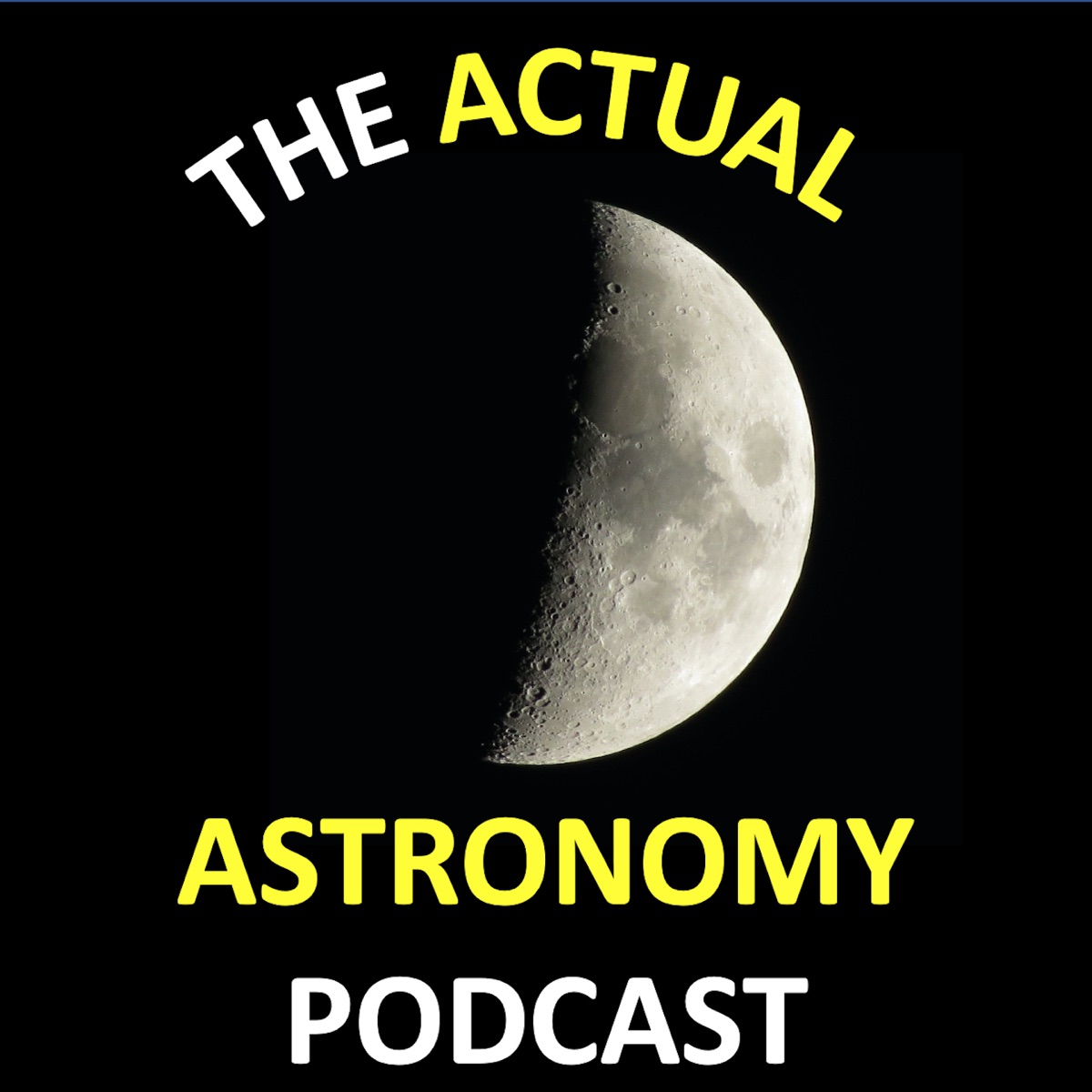
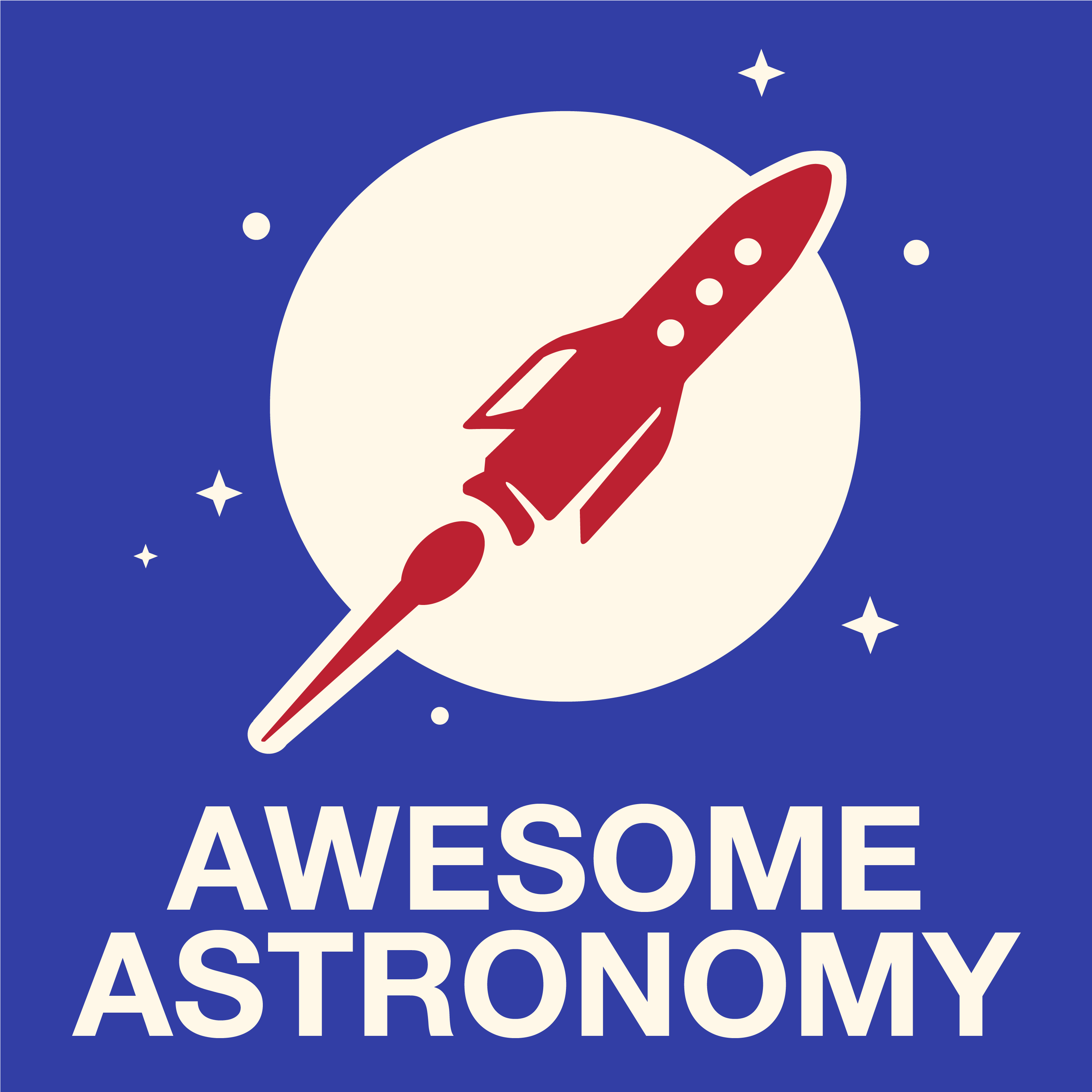

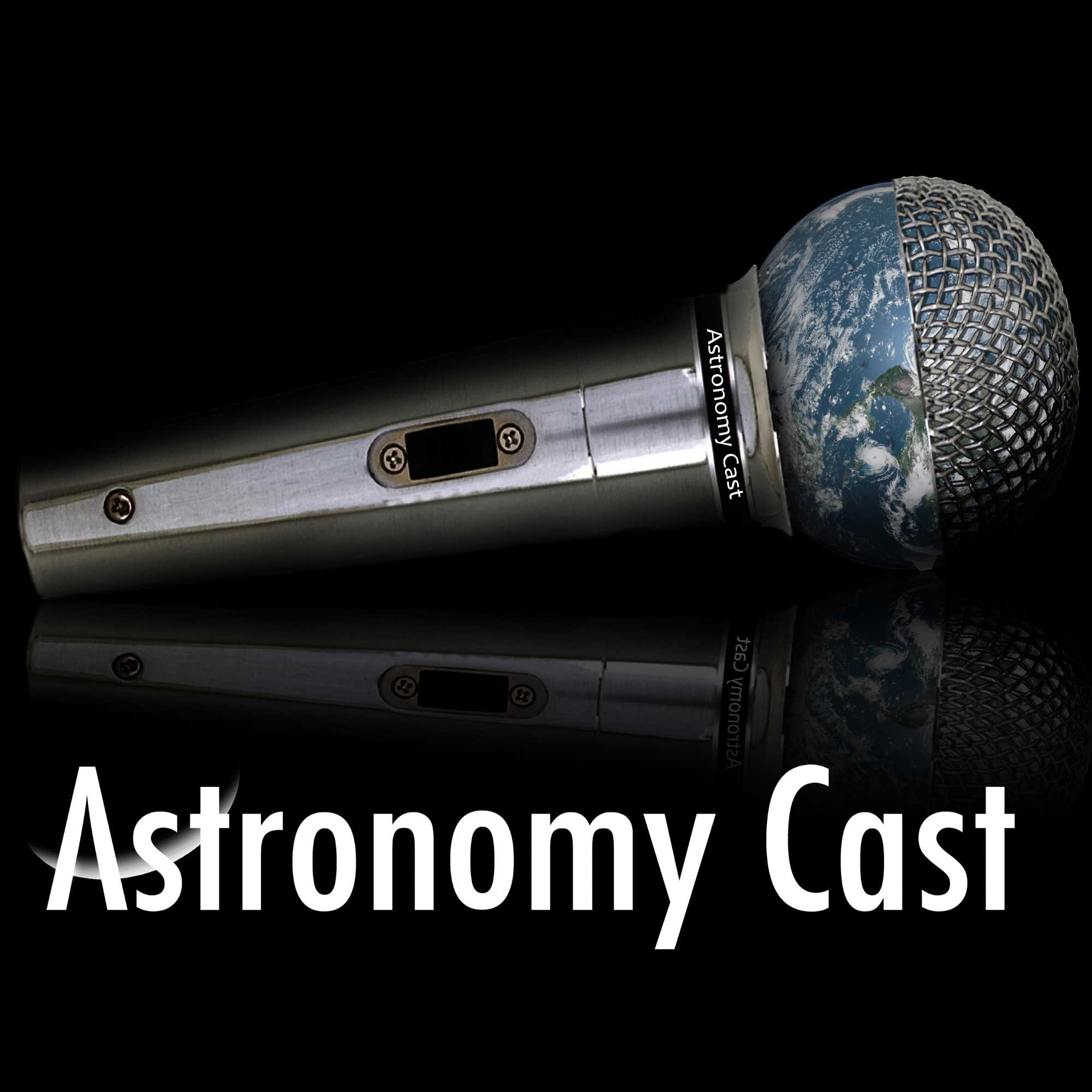

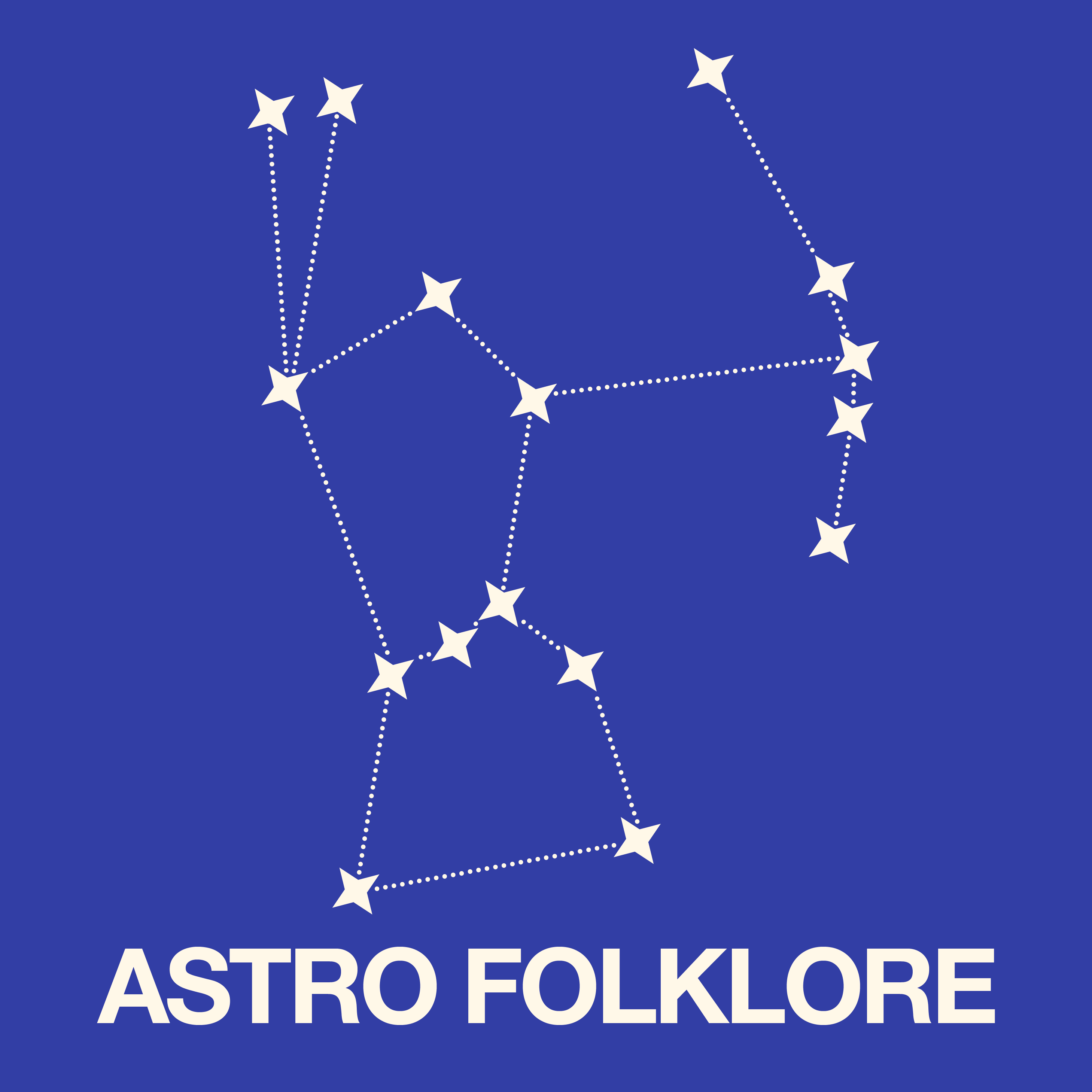
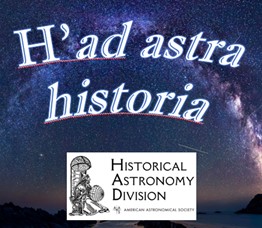
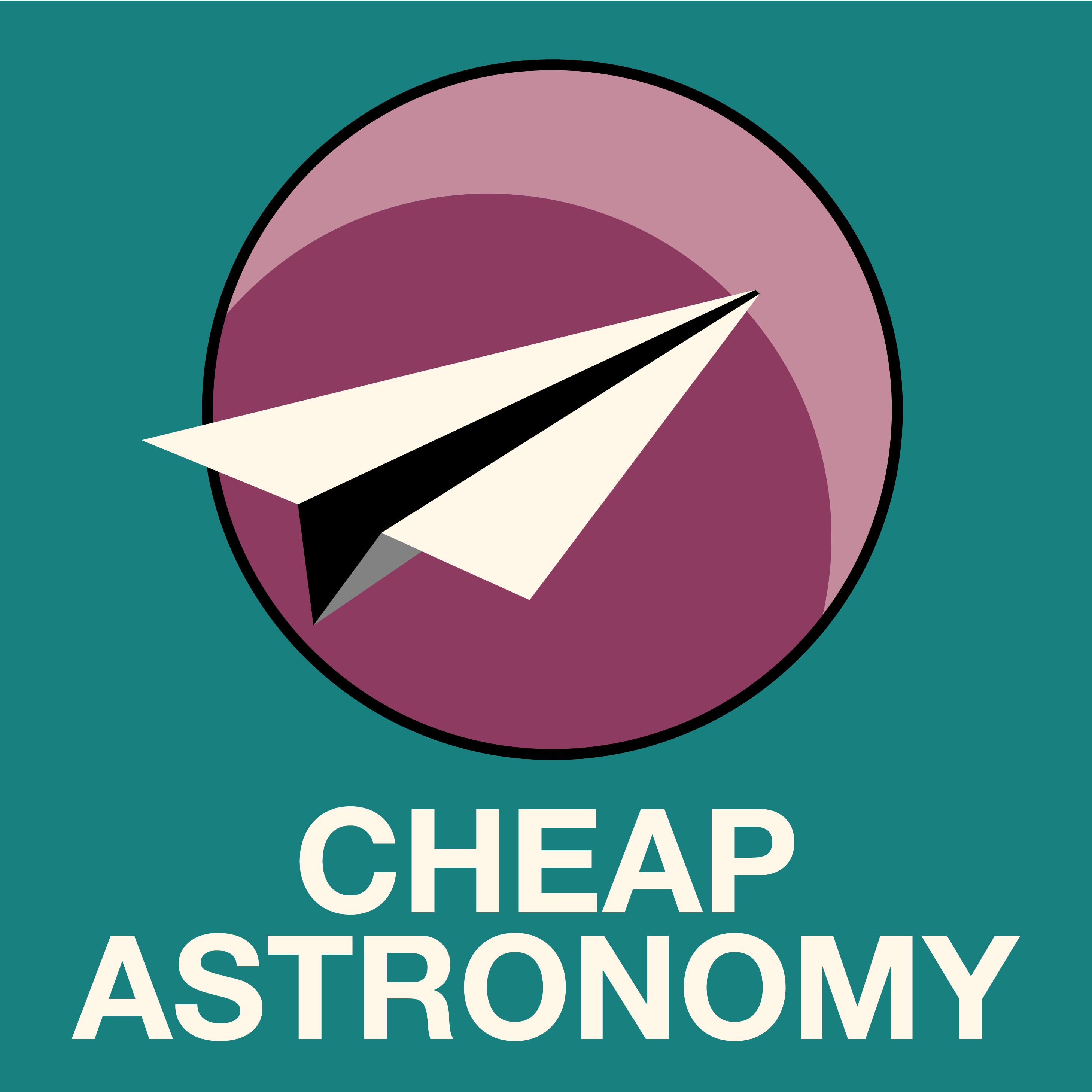
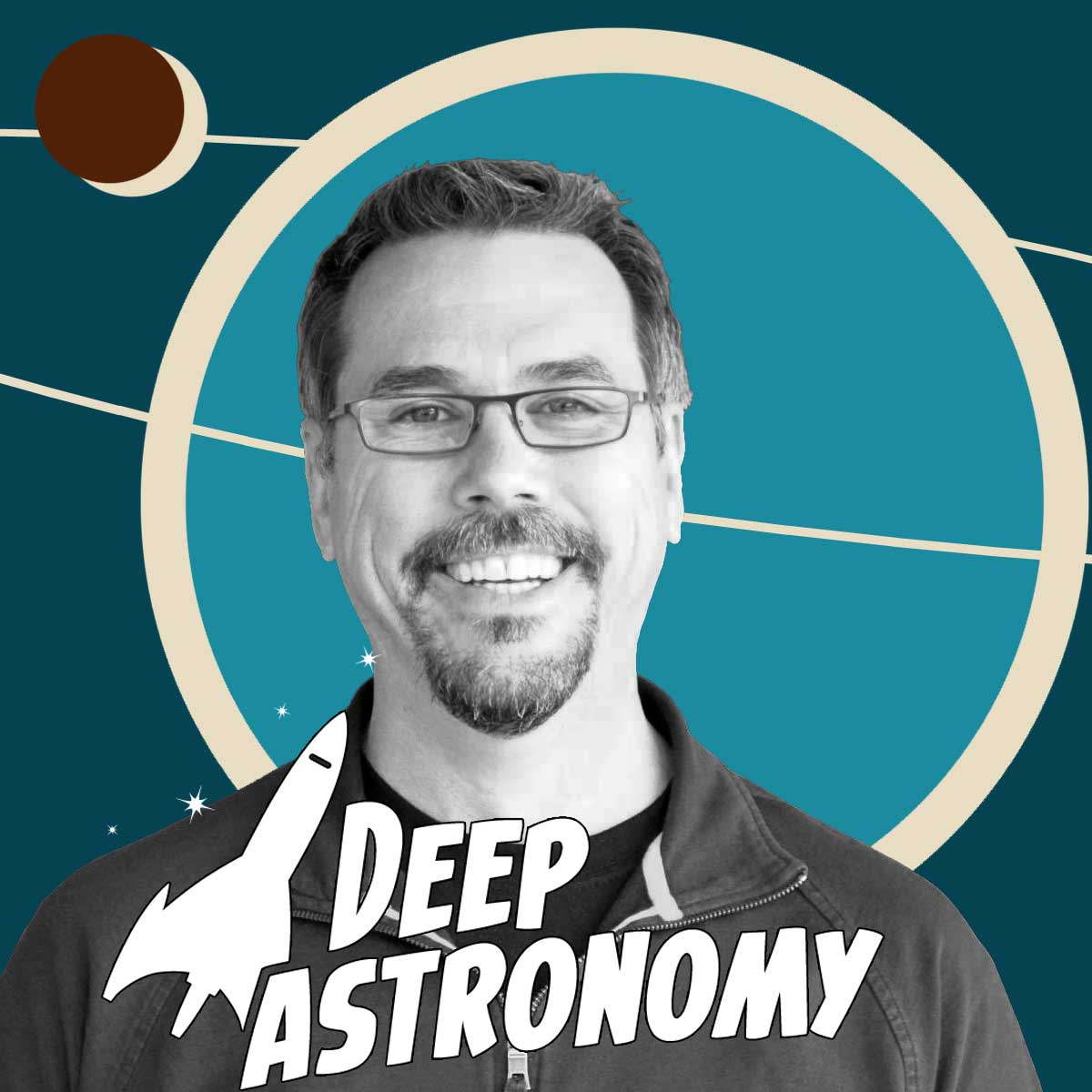

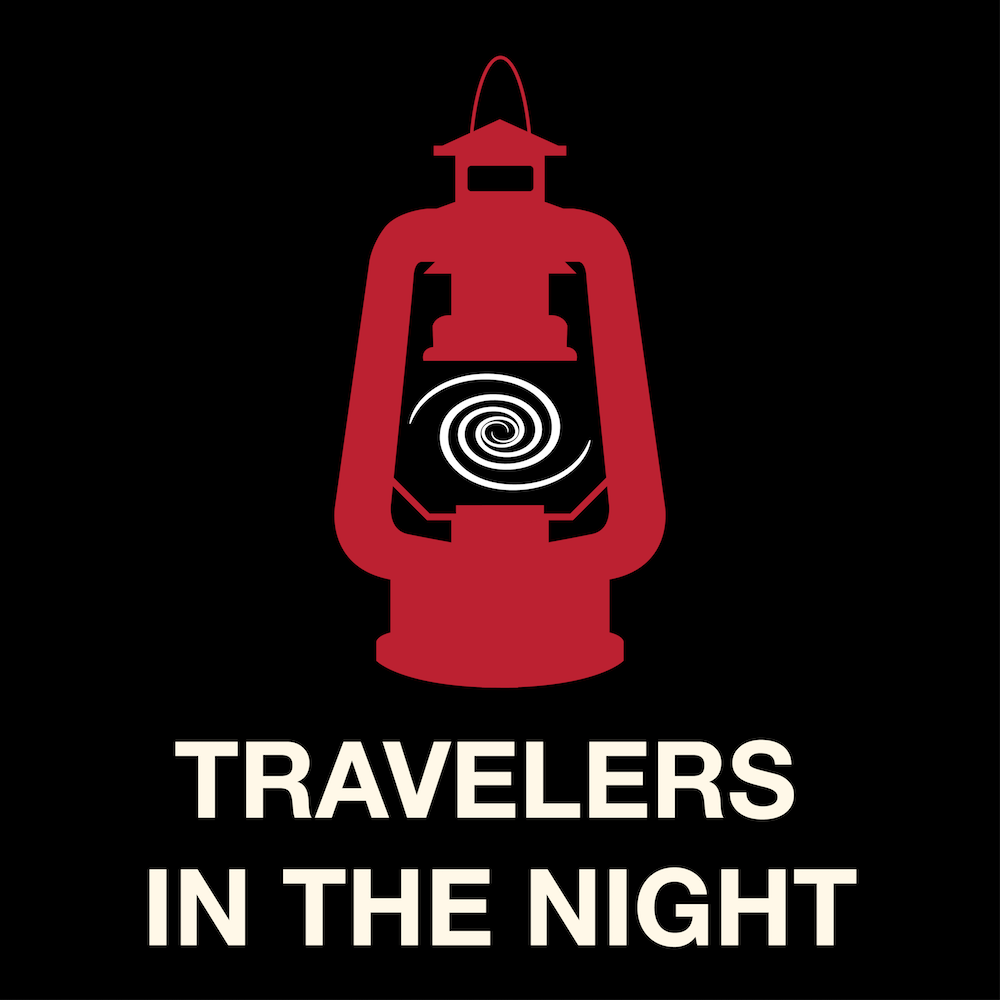


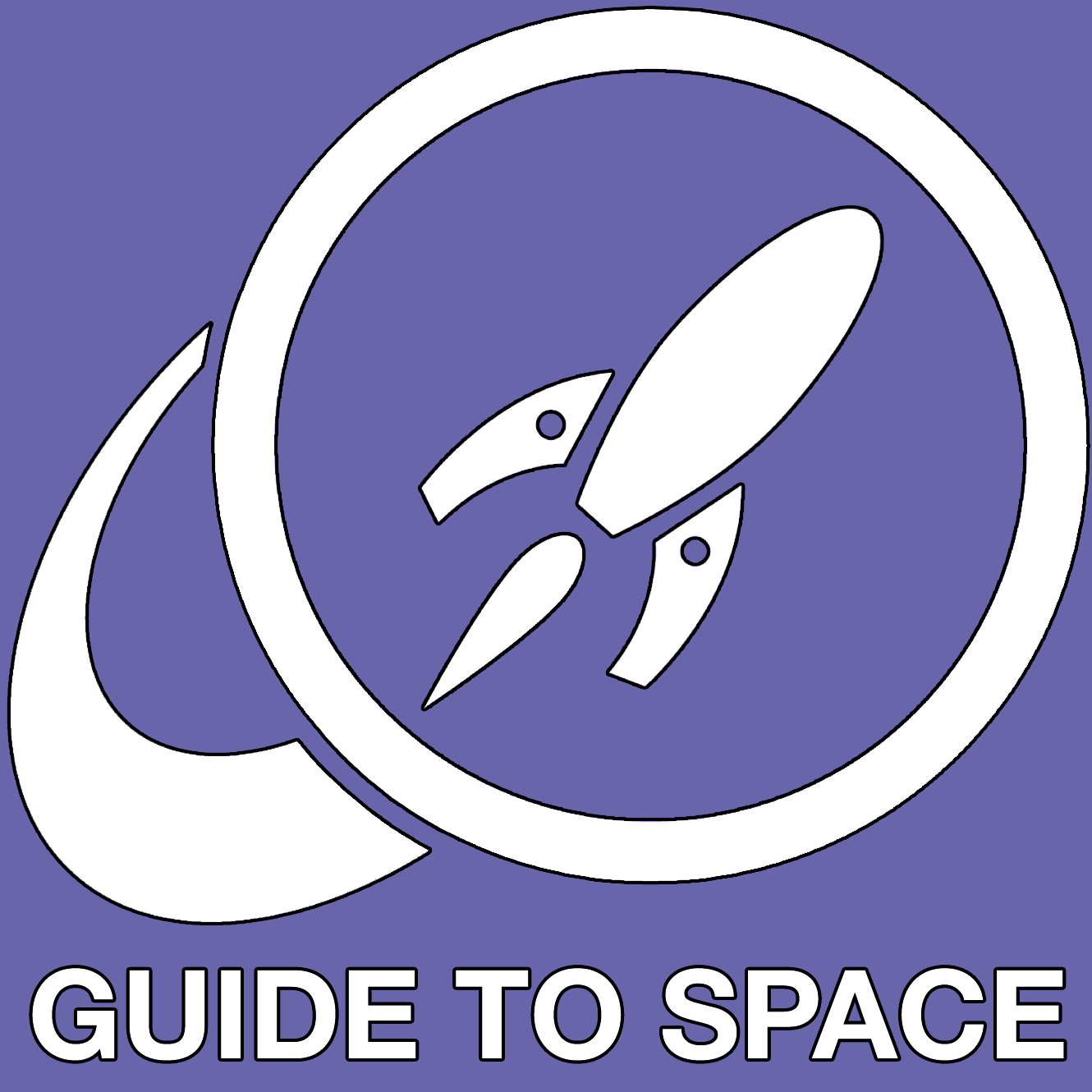




This particular episode needs to be reworked or trashed. Black holes do give up information in the form of Hawkening radiation. Our eyes cannot look at the sun because they evolved to see in a range of daylight that is useful. Light intensity in either side of this brightness and our eyes are not very good and can be damaged by high intensity light whether it is from the sun or not. These people need a qualified editor fact checking like NPR has.
what is a GA?
Absolutely fascinating show Paul 👏
What is the point of saying we are not ready to go to Mars. You obviously have issues getting up in the morning, but you still do.
One of the most enjoyable episodes that I've listened to for a long time 👊
Why are you trying to answer a question on a black hole that no one knows. The answer is we do not know and move on.
Good discussion about pros and cons of using binoculars, but I think the there is a broader reason for being suggested for beginners. Most people have a pair laying around the house that rarely get used and no additional investment required. The other reason is that becoming familiar with the night sky and proximaty to constellations with a telescope can be daunting. Wide field binos are a slam dunk for this. Keep up the good work guys.
on 3d printing in space , what if there are resources in one area and there is a potential for microbiotic life in the same area
re cosmic perspectives isn't the u.s. pulling out of the Paris accords
That voice